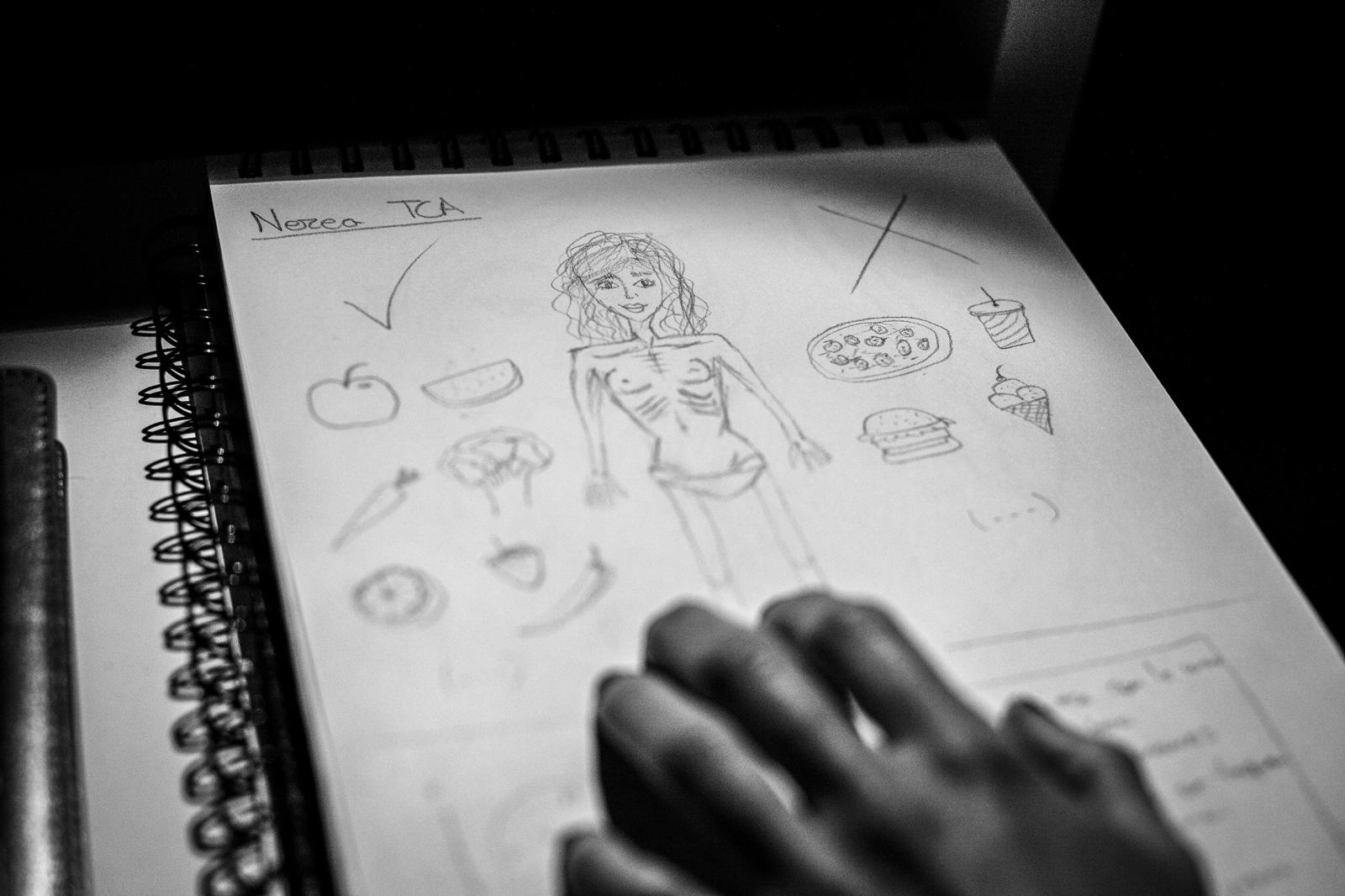Editors Only Story
The Cage. Behind a life with anorexia. / Jaula
Copyright
David Arribas
2024
Date of Work
Jan 2017 - Jul 2019
Updated Apr 2020
Topics
anorexia nervosa, Black and White, Documentary, Editorial, Emotion, Faith, Family, Fear, Food, Health/Healing, Illness, Lifestyle, Mental Illness, Multimedia, Photography, Photojournalism, Relationships, Still life, Teens, Youth
"If you're not thin, you're not attractive." "Maintaining weight is the most important thing."
In today's society of social networks these thoughts tempt millions of people whose ambition to turn their personal appearance into a brand identity pushes an obsession for the image that, however, comes from time ago. In 1689 Dr. Richard Morton sees the first documented patient of what he would call nervous consumption. Years later, in the late 19th century, theorists from the American Psychiatric Association would give medical reports of what we know today as Anorexia Nervosa. In the 1970s, when thinness was sought as a canon of beauty, a considerable increase in eating disorders or ACTs began.
Anorexia is a mental illness where the person feels an acute fear of gaining weight or gaining weight, presenting abnormal behaviors in terms of diet, weight, volume and body silhouette, having a distorted view of reality and itself. Prolonged fasting produces other derived pathologies, such as osteopenia, epilepsy, jaundice, behavioural alterations, depression, anxiety and sometimes aggressive behaviour.
According to Red Cross reports, 1 out of every 100 women, the vast majority of whom are teenagers, suffer from anorexia. Some cases are taken to the extreme, becoming a chronic disease, causing work, social and family dysfunctions. At the same time, during the course of the illness and the recovery process, both those affected and those around them suffer intensely.
There are a series of risk factors in adolescence such as early onset of puberty, sexualization of childhood, being overweight, living in an environment excessively concerned with aesthetics (beauty contests, modeling, elite sports, etc.), early access to the Internet and social networks. The social pressure to adapt to slim models and the desire to accept culture about weight control, diets and slimming formulas without a qualified health check are increasingly increasing behaviors. In Spain there are around 400,000 people who suffer from ACT, mostly young people under the age of 24 where the incidence of the disease has increased by 15% in children under 12, in the last four years. Nine out of ten diagnoses are young women, although it is now common for boys to begin to develop risk patterns that could lead to disorders.
Prevention is key in eating disorders, the family being a very important pillar. In this sense, more information is needed on the disease, the development of strategies for action and advice, with greater public involvement in prevention and early diagnosis.
Photography and text David Arribas
Text, edition and Translation Clara Muro
“Si no estás delgada no eres atractiva “, “Mantener el peso es lo más importante “.
Jaula.
En la actual sociedad de las redes sociales estos pensamientos tientan a millones de personas cuya ambición de convertir su aspecto personal en marca de identidad empuja a una obsesión por la imagen que, no obstante, viene de tiempo atrás. En 1689 el doctor Richard Morton atiende al primer paciente documentado de lo que el llamaría consumición nerviosa. Años más tarde, a finales del s. XIX, teóricos de la American Psychiatric Association darían reportes médicos de lo que hoy conocemos como Anorexia Nerviosa. En los años 70, donde se buscaba la delgadez como canon de belleza moderno, comienza un aumento considerable de trastornos de conductas alimentarias o TCA.
La anorexia es una enfermedad mental donde la persona siente un miedo agudo a aumentar de peso o a engordar, presentando conductas anómalas en cuanto a la alimentación, peso, volumen y silueta corporal, teniendo una visión distorsionada de la realidad y de sí misma. El ayuno prolongado produce otras patologías derivadas, como osteopenia, epilepsia, ictericia, alteraciones del comportamiento, depresión, ansiedad y en ocasiones, comportamiento agresivo.
Según informes de la Cruz Roja 1 de cada 100 mujeres, en su gran mayoría adolescentes, padecen anorexia. Algunos casos son llevados al extremo convirtiéndose en una enfermedad crónica, produciendo desadaptaciones laborales, sociales y en el entorno familiar. A su vez, durante el transcurso de la enfermedad y proceso de recuperación, tanto afectados como personas que les rodean, sufren intensamente.
Existen una serie de factores de riesgo en la adolescencia como un inicio precoz de pubertad, sexualización de la infancia, padecer sobrepeso, vivir en un entorno excesivamente preocupado por la estética (concursos de belleza, modelaje, deportes de élite, etc.), el acceso temprano a internet y redes sociales. La presión social por adaptarse a modelos de delgadez y el deseo de aceptación de la cultura acerca del control del peso, dietas y fórmulas de adelgazamiento sin un control sanitario cualificado son conductas cada vez más en alza. En España hay alrededor de 400.000 personas que padecen TCA, en su gran mayoría jóvenes menores de 24 años donde la incidencia de la enfermedad, ha aumentado en un 15 % en menores de 12 años, en los últimos cuatro años. Nueve de cada diez diagnósticos son mujeres jóvenes, aunque es ya habitual que hombres jóvenes empiecen a desarrollar patrones de riesgo que puedan derivar en trastornos.
La prevención es clave en los trastornos de conducta alimentaria siendo la familia un pilar muy importante. En este sentido, se hace necesaria más información sobre la enfermedad, la elaboración de estrategias de actuación y asesoramiento, con una mayor implicación pública en materia de prevención y diagnóstico temprano.




























